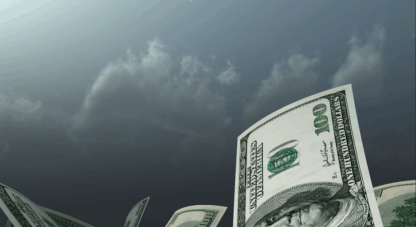People who are on speaking terms with logic have a hard time understanding the attraction of communism. Taking things from people who have worked hard for them and giving them to people who have not worked for them is astonishingly destructive. It sounds good only to those who have not worked for them.
The problem is, there are an awful lot of such people. President Biden has been importing them by the multi-millions across the southern border. Many of those millions are doubtless good, productive people. The point here is merely that the immense benefits they immediately enjoy in the US are ones they didn’t provide value to someone else in order to receive, and they come from societies where they are so oppressed by the rich that they believe retribution in the form of communism is the only solution.
Meanwhile, China has been a full-fledged communist society for nearly 75 years. After the near-destruction of the country by Mao, Deng Xiaoping took a page from Lenin’s New Economic Policy—which saved Russia from starvation in 1921 by implementing capitalistic reforms under a still-communist government—and made China the second-largest economy in the world.
But a free market in an un-free society is never really free. Command economy programs such as China’s apartment building initiative are a case in point. Economic dislocations in China are legion, and are causing the country immense problems.
Doug Noland focuses this week on China’s massive economic difficulties, and makes the crucial point that shock waves do not respect borders. What shakes China is shaking, and will continue to shake, the largest semi-free market economy in the world—that of the US.
Few people truly realize that in calling his publication Credit Bubble Bulletin, Doug is not merely describing a common phenomenon in modern economies. He is describing the essential character of modern economies. Government interference in economies causes misallocation. Misallocation causes build-ups in certain areas at the expense of others.
Those build-ups are bubbles. And because governments don’t admit that they’re wrong, and because they make economic decisions on the basis of things other than economic considerations (e.g., elections), bubbles tend to remain, and they tend to grow until they burst.
It’s not that free markets don’t have inequities or misallocations, it’s that, because they’re free and can therefore move without restriction, they tend to equalize much faster.
So tune in to CBB this week, where Doug tells a tale of two cities—Beijing and DC—one, a command economy masquerading as a free market; the other, a massively manipulated economy masquerading as a free market.
Key Takeaways:
- Markets from an Elliott Wave perspective
- When China sneezes, the world catches cold
- Keep your head when all about you are losing theirs
- Gold just won’t go down
The McAlvany Weekly Commentary: David and Kevin interview two colleagues of Elliott Wave International’s Bob Prechter this week. Steven Hochberg and Pete Kendall offer priceless insights on markets and investing, starting with this gem from Pete: “the markets are a humility machine. They’re literally structured to do the opposite of what the consensus expects.” That observation dovetails nicely with our theme from last week on herd dynamics, and sets up the interview perfectly. The guests apply history, theory, and a form of technical analysis to the hosts’ weekly discussion of largely fundamental factors, and consequently strengthen the MWC conclusions. Just because trillions of dollars are moving at the behest of millions of jubilant investors doesn’t mean the coast is clear. The guests share the hosts’ deep concern over the relatively near term future. David asks the guests to share their insights concerning stocks, fixed income, currencies, gold, silver, energy, and commodities, which makes for a far-ranging and deeply insightful discussion.
Credit Bubble Bulletin: Doug shines a light on China this week. All the talk in major financial media is on Chinese deflation. Doug contrasts this reporting with credit figures that show massive increases in January lending. Then he makes sense of the apparent contradiction. China is fighting deflation with tons of liquidity. The technique should be familiar to Americans, as it is our go-to policy at the first sign of deflation. But none of this is merely an esoteric discussion of a nation on the other side of the world. It matters here, too: “Today, intractable problems at the global ‘periphery’ (i.e., China) bolster late-cycle terminal phase bubble excess at the ‘core.’ Where would U.S. and global goods inflation be today if not for downward price pressures from China’s massive global export machine? How great is the flow of finance exiting China and Chinese markets in favor of U.S. and global asset markets? How much is being borrowed at low-cost Chinese interest rates—for global speculation, including ‘carry trades’ and such?”
Hard Asset Insights: Morgan emphasizes this week that, “Powell’s trust-me trade higher in financial assets requires that inflation play nice.” Unfortunately, there are a number of factors that indicate inflation may have a mean streak. Morgan updates his recent analysis of the energy situation, and it continues to look bleak going forward. Energy costs affect the price of most staples, so a threat there is a threat almost everywhere. He also notes a crucial comment from market analyst John Hussman, “We estimate that current market conditions now ‘cluster’ among the worst 0.1% instances in history.” That means we’re in, at best, one- (the worst one) in-a-thousand market conditions. And we’re still getting record highs in certain markets? FOMO and POMO are very real, and they’re compelling right now. Morgan’s factual analysis can bring needed calm and logic to such overheated emotion.
Golden Rule Radio: Tory and Miles begin the show this week with a quick overview of the metals followed by a deeper dive on gold. Miles continues to hope for a buying opportunity in the yellow metal, and continues to be disappointed. It has come down from its peak, but shows remarkable strength and has settled into a small trading range that has held for five or six weeks. Given the uncertainty regarding the Fed’s actions going forward and worldwide economic conditions, gold is showing strength that it otherwise would not likely have. Miles is mildly surprised that it has not followed the white metals down given strength in equities and the dollar. Silver has been gradually sliding in price over the past several weeks. Platinum is moving sideways, and palladium has given up everything it gained since 2018. Tory discusses a number of ways to implement ratio trades between the metals.















